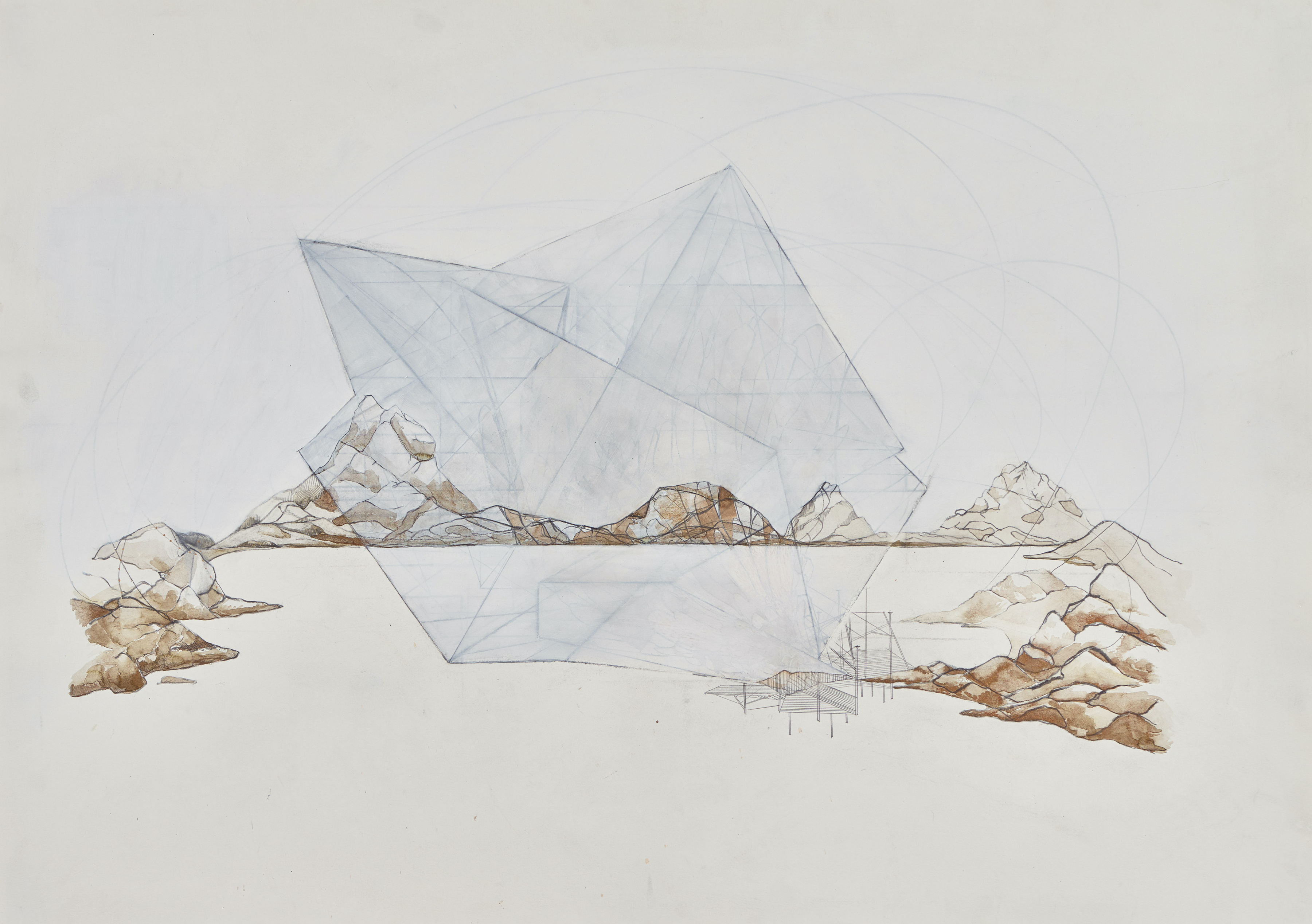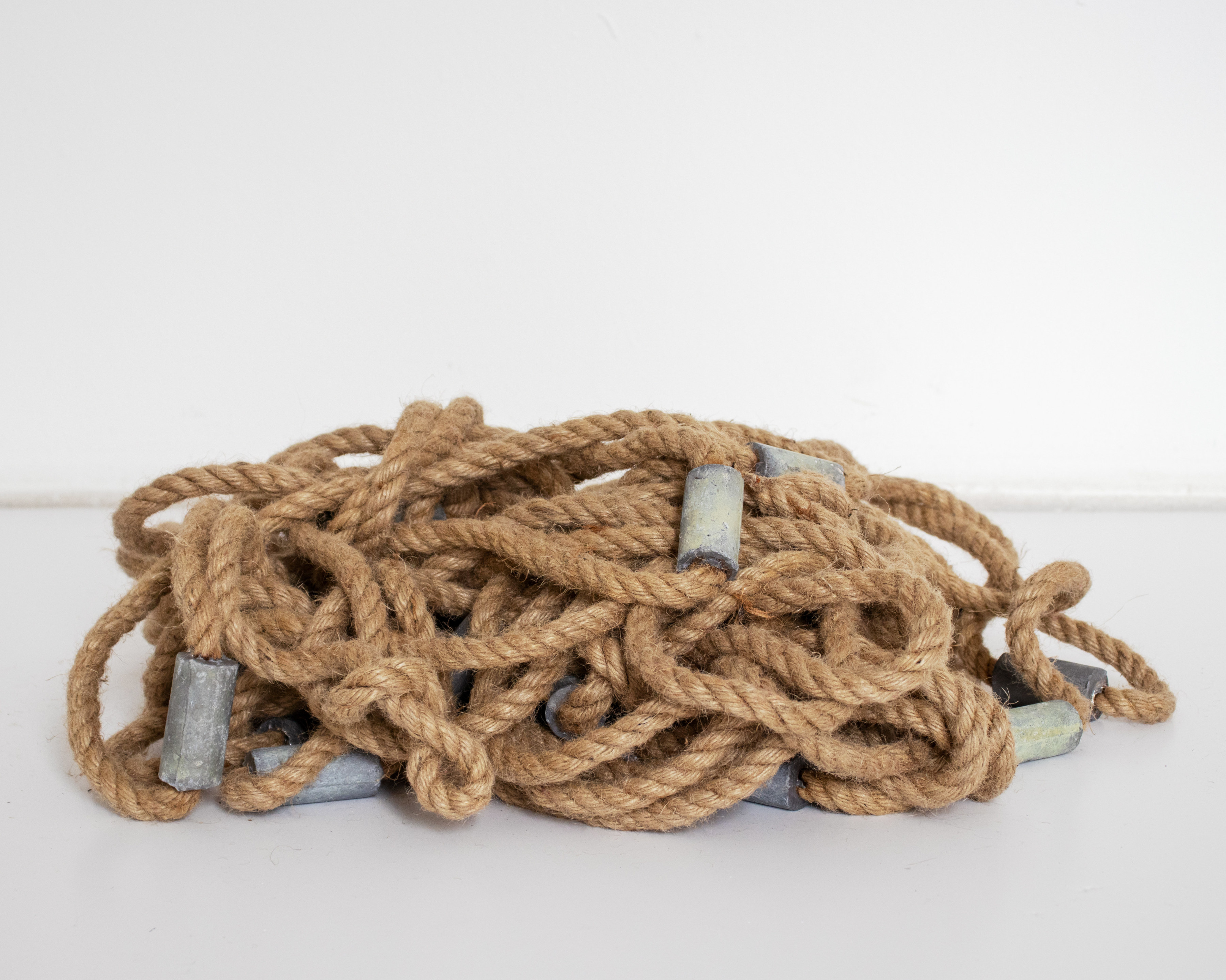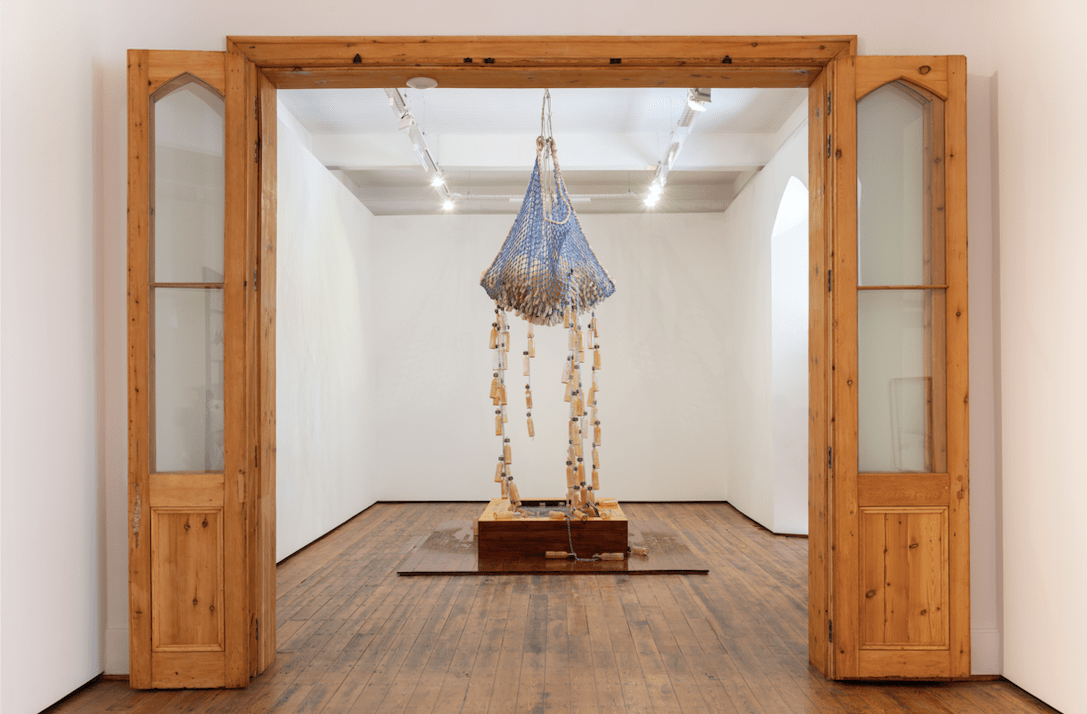
Fathom
Fathom /ˈfað(ˈ)m/
(noun) a unit of measurement of the depth of water.
(verb) an attempt at making sense of something difficult to comprehend.
Goodman Gallery is pleased to announce its participation in Galleries Curate: RHE, the first chapter of a collaborative exhibition and online platform that brings together twenty one galleries from across the globe. Water, a universal and unifying subject matter, is the basis and starting point for each of the participating galleries’ exhibitions.
Fathom, Goodman Gallery’s contribution to RHE, takes the form of a group exhibition of artists working across a range of media including collage, land-based intervention and sensory installation. The coastline, seen here as both a physical and symbolic framework, forms the vantage point and undertow of the exhibition. As the intersection between land and sea, the coastline represents both a territoriality, and a boundlessness. Inscribed with stories that bear histories of occupation and freedom, coasts are loaded with cultural significance. As a counterpoint, they also appear to be infinite, extending beyond the horizon.

ALFREDO JAAR
Alfredo Jaar’s Searching for Spain (2012) reflects the unprecedented immmigration crisis of our time. Jaar photographed the ocean from the viewpoint of an abandoned palace in Algiers, the capital city of Algeria. The palace, today a hiding place for immigrants before a journey across the Meditteranean, faces the direction of Spain.
Hear Alfredo jaar discussing the work below

PAMELA SUNSTRUM
Pamela Phatsimo Sunstrum’s Monolith III is a drawing of a landscape that appears simultaneously imaginative and representational. A precipitous mountain range is delicately mapped along a coastline, enclosing a large polyhedron shape. Beneath the surface and within the body of this central structure are visible traces of pentimenti.
Here Sunstrum discussing the work below

Kiluanji Kia Henda
Mare Nostrum (Black Birds), 2019/2020
Assemblage of 53 inkjet prints on fine art papers
264.5 x 403 cm
Edition of 5

(detail)
Kiluanji Kia Henda
Mare Nostrum (Black Birds), 2019/2020
Assemblage of 53 inkjet prints on fine art papers
264.5 x 403 cm
Edition of 5
KILUANJI KIA HENDA
Kiluanji Kia Henda finds a point of contact between an imagined coastal landscape, and a geopolitically laden site. Mare Nostrum (Black Birds), 2019 is an assemblage of black and white inkjet prints, depicting the expansive salt piles in Arles, extracted from the Mediterranean Sea. Historically, the Mediterranean is a site of development for civilizations and solidarity between different cultures. It is also a place of death and disappearance. Kia Henda intervenes with sections of the salt reserves by covering them with a large black sheet. Photographed at varying angles and distances, the sheet appears and disappears, an abstract form that migrates across the horizon.
Hear Kia Henda discuss the work below

GERHARD MARX
Through a physical process of fragmentation, migration and collage, Gerhard Marx disrupts the boundaries and hegemonic claims inherent in maps, that allow for a consideration of landscape as social construction. Particles (2020), continues Marx’s engagement with discarded and decommissioned Cartographic Archives, where maps are incrementally cut loose from their original purpose and reassembled into a new and immeasurable spatial imaginary. Within the restrictive surface-area of each canvas, Marx sets himself the task of exploring the possibilities of describing depths, volumes and distances.
Hear Marx discuss his practice below

JEREMY WAFER
Jeremy Wafer’s sculpture Fathom (2021), the exhibition’s titular work, is a thirty-meter length of rope upon which plugs of lead are cast in one-meter intervals. The work references a sounding line, a length of gradated line with a lead weight that is cast into water to measure its depth. Fathom is part of a series of ideas Wafer is currently working with that reflect on burials at sea.

Sue Williamson
Messages from the Atlantic Passage (VI), 2017 – 2021
Installation of engraved glass bottles, water tanks, steel shackles and fishing net
Variable Dimensions
SUE WILLIAMSON
Messages from the Atlantic Passage V (2017), by Sue Williamson, is a large-scale installation based on the accumulated records from both sides of the Atlantic, during the late history of slavery in the 19th century. Suspended from the gallery's ceiling, engraved glass bottles and fishing nets fall into a pool of water, representing specific voyages from West Africa across the Atlantic.
See documenation of Messages from the Atlantic Passage (VI) below

Dor Guez
Letters from the Greater Maghreb, 2020
Archival inkjet print
36 x 115cm
Edition of 5 plus 2 AP

Dor Guez
Letters from the Greater Maghreb, 2020
Archival inkjet print
36 × 109 cm
Edition of 5 plus 2 AP
DOR GUEZ
Hear Guez discuss the series below
DOR GUEZ
Hear Dor Guez discuss his piece below